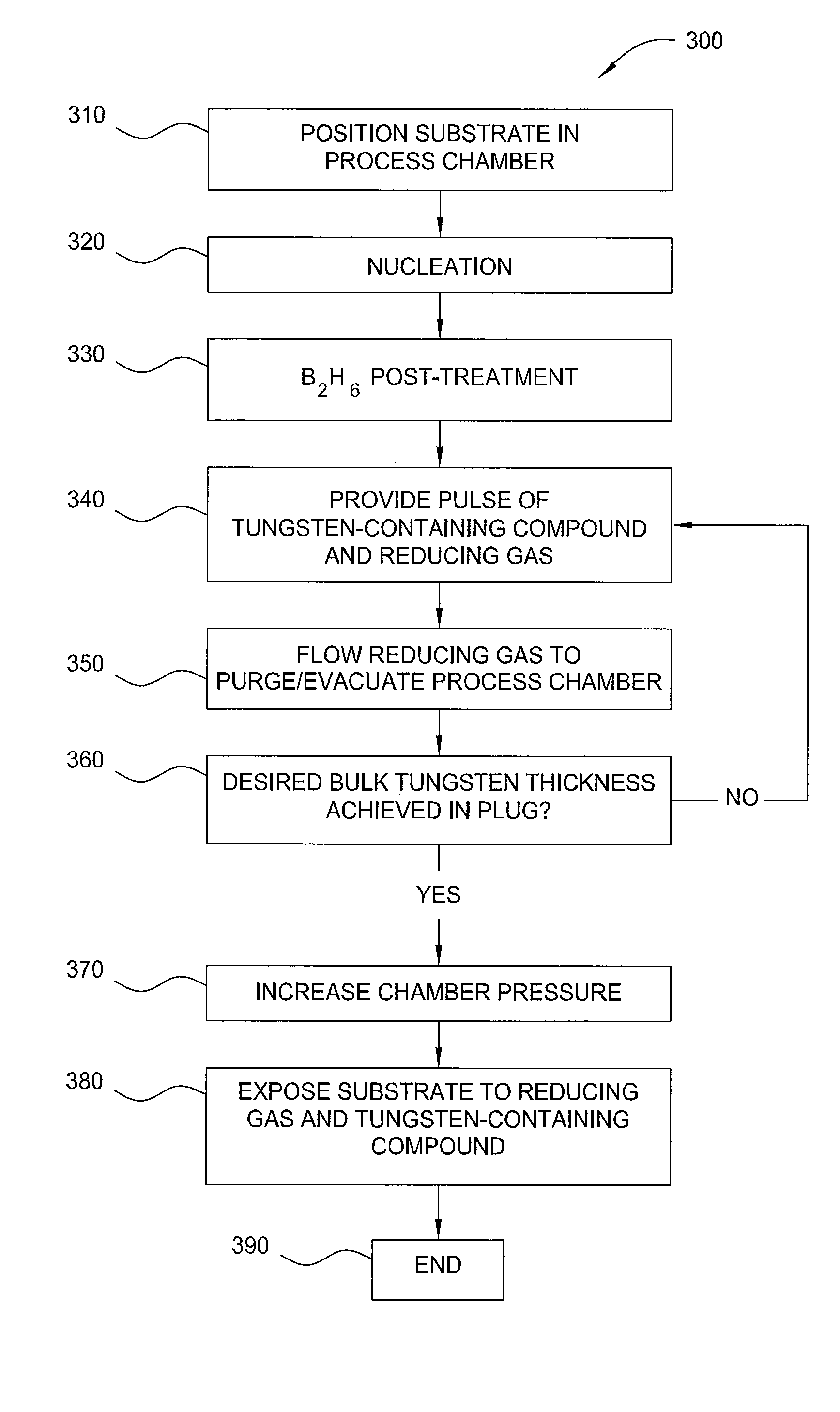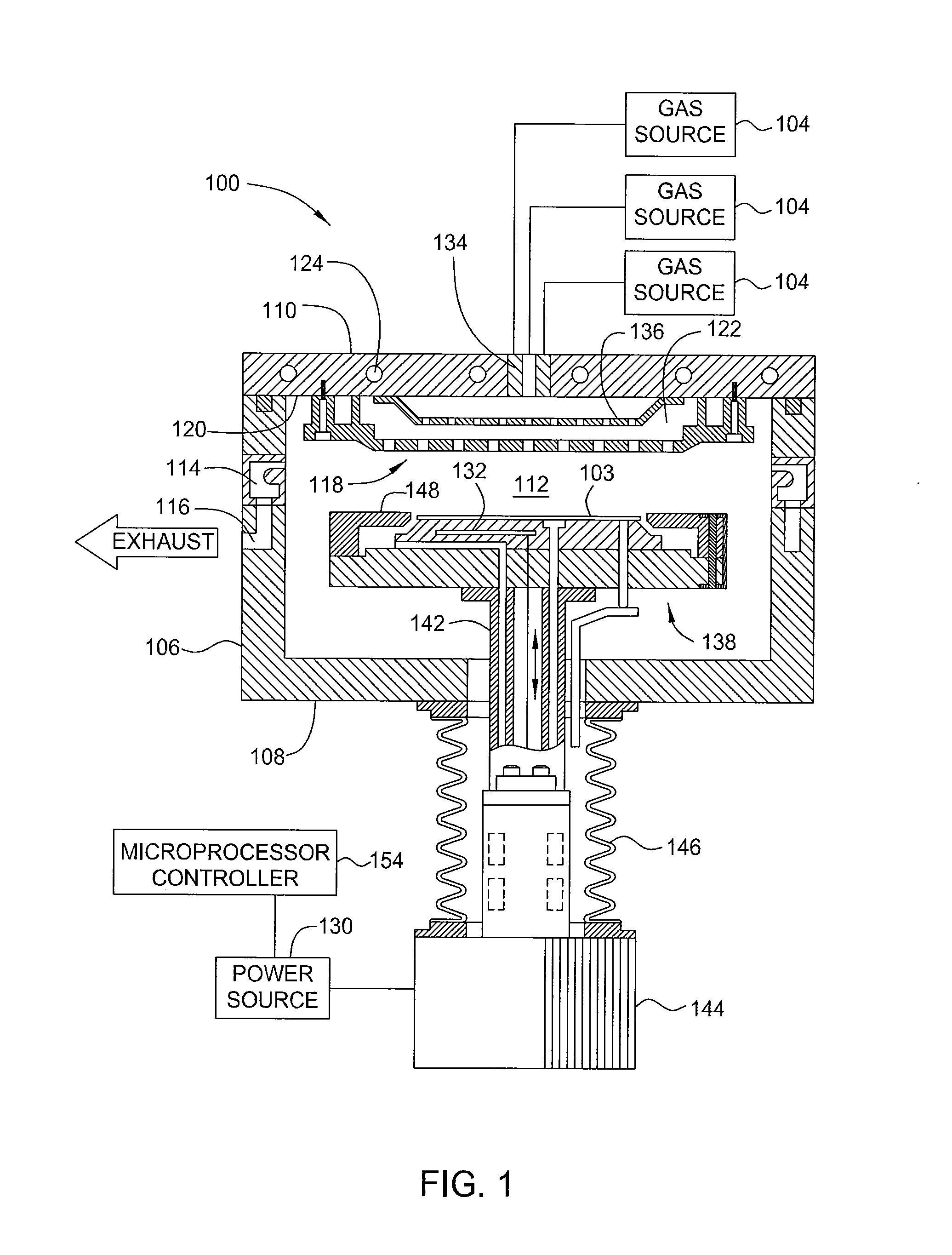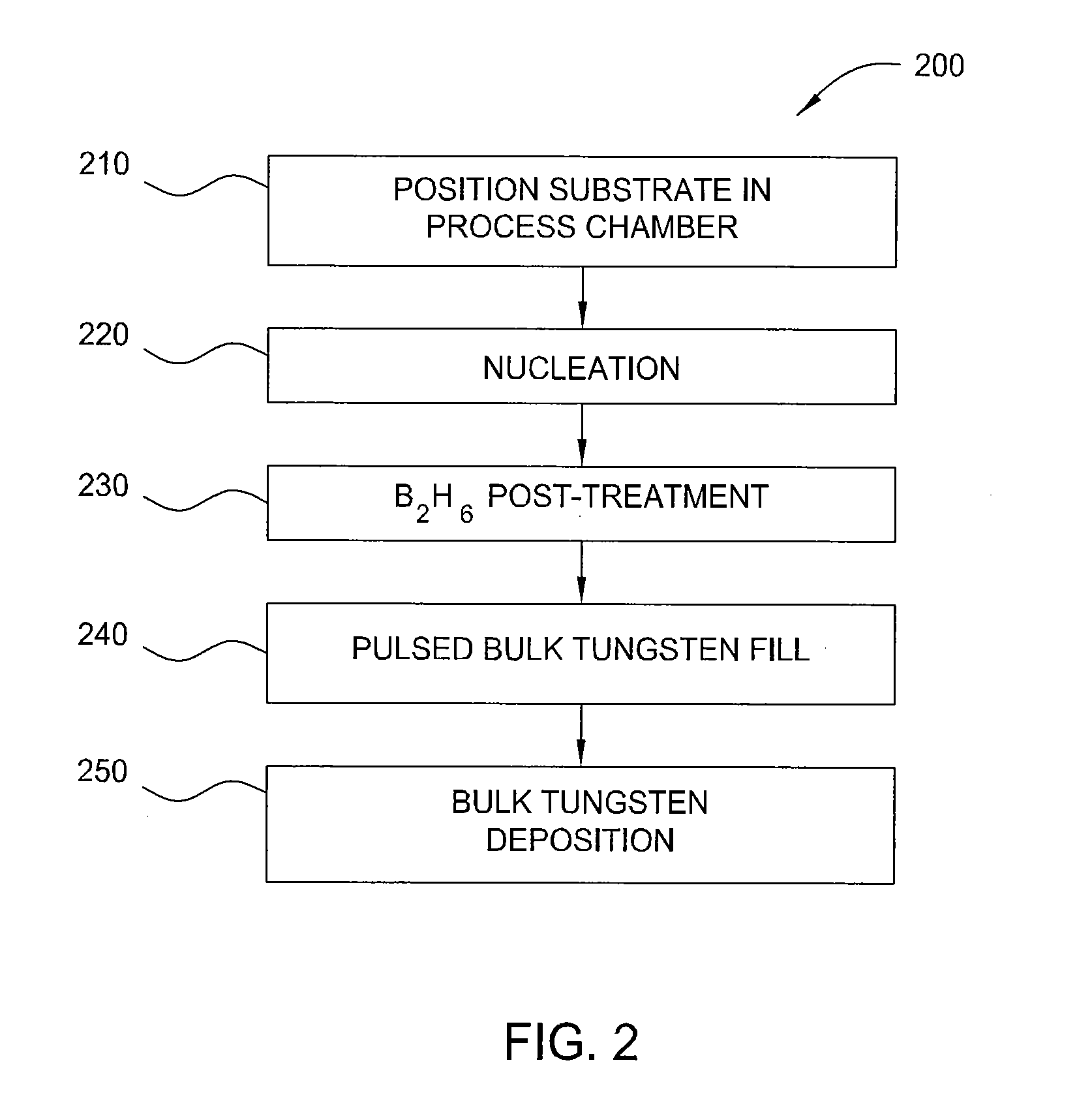Method of depositing tungsten film with reduced resistivity and improved surface morphology
a tungsten film and resistivity technology, applied in chemical vapor deposition coatings, coatings, metallic material coating processes, etc., can solve the problems of difficult uniform deposit of tungsten, poor film morphology of tungsten films comprised of thin tungsten nucleation layers and thick bulk tungsten layers, etc., to achieve the effect of improving surface morphology and reducing resistivity
- Summary
- Abstract
- Description
- Claims
- Application Information
AI Technical Summary
Benefits of technology
Problems solved by technology
Method used
Image
Examples
example
[0059]Following formation using a CVD process of a nucleation layer of desired thickness of about 30 angstroms using WF6 and B2H6 as reagents on a substrate having vias with a top critical dimension of about 50 nm and about a 4:1 aspect ratio, the substrate was maintained in the CVD chamber and a bulk tungsten layer was deposited using a two-stage deposition or fill method. In the first stage, a first bulk tungsten film was deposited to a thickness of about 500 angstroms in the vias under the following conditions:
Reagents: WF6 and H2;
Pressure: 90 Torr;
Temperature: 400° C.;
[0060]Flow rates: 100 sccm WF6 and 5,000 sccm H2;
Pulse Duration: 2 seconds.
The substrate was then maintained in the CVD chamber and the CVD chamber was pressurized to 300 Torr. During pressurization of the chamber, H2 was introduced at a flow rate of 3,000 sccm for about 20 seconds. During the second stage, a bulk tungsten layer was deposited to a thickness of 2,500 angstroms on the substrate surface using a CVD pr...
PUM
| Property | Measurement | Unit |
|---|---|---|
| temperature | aaaaa | aaaaa |
| pressure | aaaaa | aaaaa |
| pressure | aaaaa | aaaaa |
Abstract
Description
Claims
Application Information
 Login to View More
Login to View More - R&D
- Intellectual Property
- Life Sciences
- Materials
- Tech Scout
- Unparalleled Data Quality
- Higher Quality Content
- 60% Fewer Hallucinations
Browse by: Latest US Patents, China's latest patents, Technical Efficacy Thesaurus, Application Domain, Technology Topic, Popular Technical Reports.
© 2025 PatSnap. All rights reserved.Legal|Privacy policy|Modern Slavery Act Transparency Statement|Sitemap|About US| Contact US: help@patsnap.com



